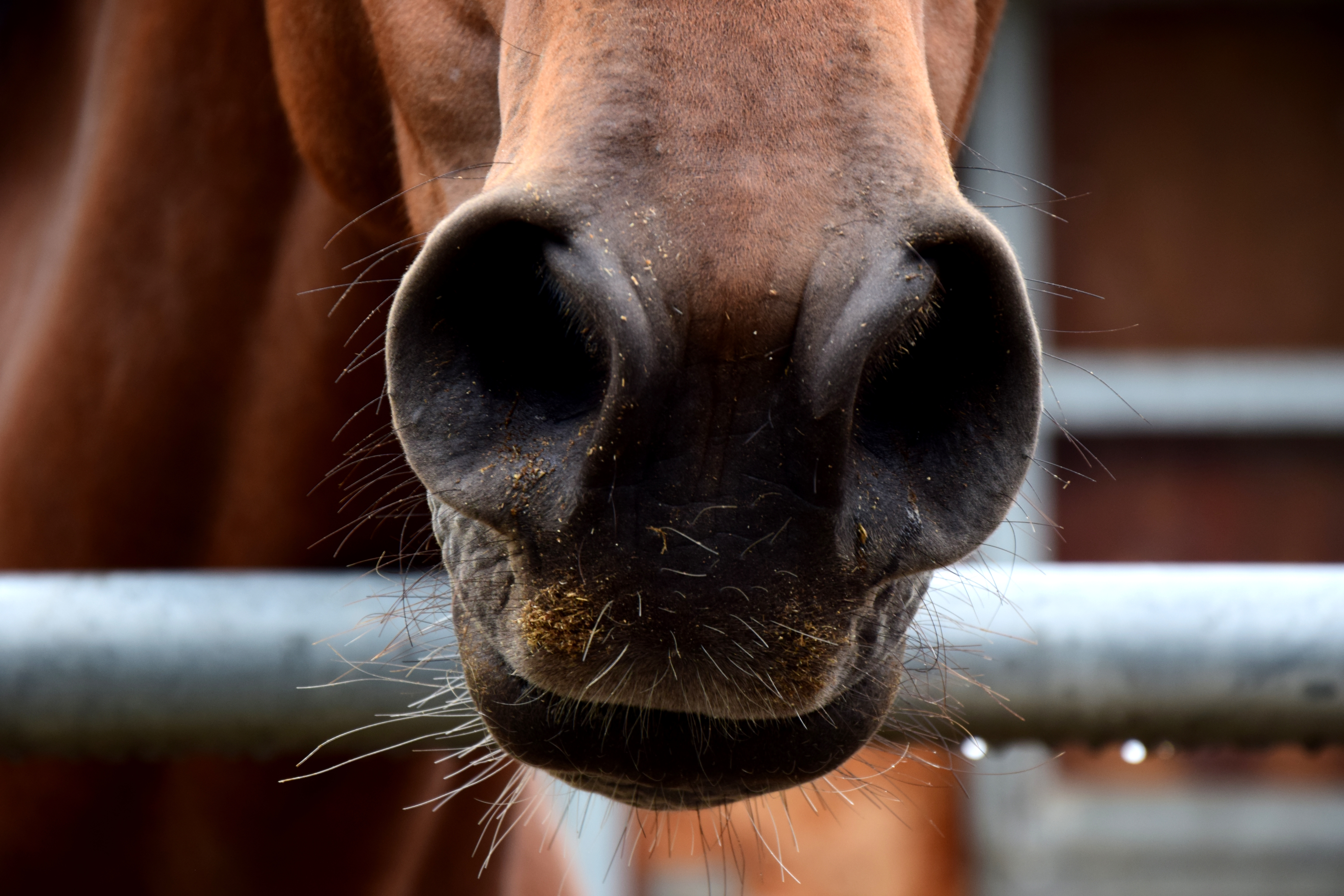A runny nose isn’t the most pleasant thing to discover when you bring your horse in for a ride. But before you reach for the rag to wipe his nose clean, take a few minutes to inspect the discharge—and to give him a thorough once-over, too. Chances are, a runny nose is nothing serious. But you will want to make sure the nasal secretions are not an early warning of a serious health issue.
Take a closer look
• Inspect the discharge. Make note of its color, odor, quantity and consistency. Note the presence of any foreign material such as chewed foodstuffs, dust or debris, and whether it’s coming from one or both nostrils. If your phone is handy, take photos to share with your veterinarian and to keep track of changes over time.

• Observe your horse’s demeanor. Does he seem “dull” or lethargic? Conversely, is he acting anxious or stressed? Has he been eating and drinking normally? Is he coughing?
• Check his vital signs. Is he running a fever? Check his pulse: An elevated heart rate in a resting horse could be an indication of pain. If your horse coughs, has a fever and shows other signs of illness in addition to a runny nose, a respiratory disease may be developing and you’ll need to call the veterinarian.
Click here to learn what your veterinarian wants you to know about antibiotics.
On the other hand, if your horse’s nasal discharge is clear and watery, and he otherwise seems well, then it’s probably nothing to worry about. He most likely inhaled a bit of hay or dust that caused some localized irritation in his nasal passages.
Or perhaps he got a bit of dust in his eye, and the excess tears are draining through his nostrils. Wipe the moisture away, but keep an eye on your horse to make sure the discharge does not return.
A trickle of bright-red blood that stops within minutes is also probably nothing to worry about. Your horse most likely scratched the interior of one nostril on a stick in the grass or a stemmy piece of hay.
If you see these signs, call your veterinarian right away:
• Foul-smelling discharge could indicate an infection of some kind, maybe in a tooth or sinus. You may notice swelling on one side of his face. Thin, gray, frothy mucus, which may also be foul-smelling, is likely to indicate an infection of the guttural pouches, the two sacs connected to the eustachian tubes between the horse’s ears and throat.
• Bright-red blood that flows readily and without slowing or stopping within a half-hour could indicate injury within the nasal passages.
• Dark blood draining from the nose has probably been accumulating somewhere in the horse’s head, such as the sinuses or guttural pouches. If dark blood gushes when he lowers his head, the problem may lie in the respiratory tract.
• Thick, yellow, pus-filled mucus may result from a bacterial or viral infection or strangles. In either case, the horse will also have a fever, cough and other signs of illness. In the case of strangles, you may find painful swellings under the jaw and around the throat, and the horse may stand with his head lowered.
• Saliva and chewed food emerging from the nose and/or the mouth are signs of choke, a blockage in the esophagus that is preventing what the horse swallows from reaching his stomach. A horse with choke is also likely to be coughing and gagging, and he may panic as he attempts to clear the blockage. Immediately remove all food and water until a veterinarian arrives.
Just to be safe when your horse has a runny nose
Isolate your horse from others if the signs point toward a contagious disease such as strangles or a respiratory infection. Place him in his stall or in a small turnout where he is at least 10 feet away from any other horses—far enough to avoid nose-to-nose contact—at least until the veterinarian arrives to confirm the diagnosis. You’ll also want to take measures against spreading any potential infection yourself, on your hands or clothes. If you need to handle other horses while you wait for the veterinarian, wash or sanitize your hands; ideally, you’d change your clothes, too, or at least put on a coverall.
This article first appeared in EQUUS issue #460.
Don’t miss out! With the free weekly EQUUS newsletter, you’ll get the latest horse health information delivered right to your in basket! If you’re not already receiving the EQUUS newsletter, click here to sign up. It’s *free*!








